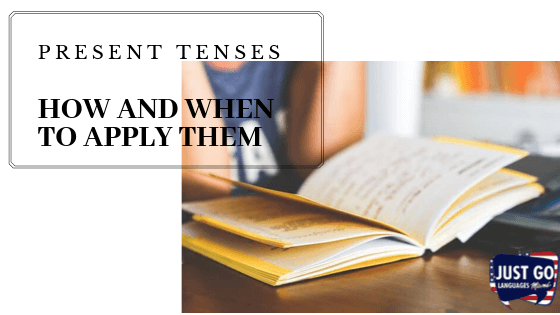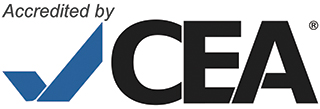
Being an English learner can be daunting… so many tenses to choose from! How can students remember sentence formulas and know when to choose between the simple present and present progressive tense all while using effective subject-verb agreements? Dear students, it’s not easy… I know. But hopefully this summary will be a useful resource! Continue reading below for some tips on these important grammar focus points.
Simple Present Tense:
The first thing one must remember when learning a new tense is the formula used to form sentences, in this case: in simple present . Below, you will find the formulas for affirmative (+), negative (-) and interrogative (?) statements:
+: subject + verb(s) + complement.
-: subject + doesn’t/don’t + verb + complement.
?: Does/Do + subject + verb + complement?
Quick Review!: In order to use the simple present tense, you must know the rules of subject-verb agreements. We must remember that base verbs first person, second person and third person plural subjects (i.e.: I work, We work, You work, They work) but you must add -s at the end of verbs with third person singular subjects (i.e.: She works, He works, It works).
When to Use: The second thing you must learn is when to apply which tense. The simple tense is used when expressing routine habits, permanent situations or concrete facts. When using the simple present to talk about one’s routine, it is common to use adverbs of frequency such as: always, sometimes, never, rarely, often, usually, every day/week/month/year, etc.,
Present Progressive Tense:
Unlike simple present, the present progressive tense incorporates 2 new elements: the verb to be and -ing at the end of the action verb.
Below, you will find the formulas for affirmative (+), negative (-) and interrogative (?) statements:
+: subject + verb to be + verb-ing + complement.
-: subject + verb to be + not + verb-ing + complement.
?: verb to be + subject + verb-ing + complement?
Quick Review!: The verbs to be are: is, are and am. You need to know them in order to use the present progressive tense correctly. Be sure you are using the correct subject-verb agreement when constructing your sentences. First person takes the verb: am (I am.), second person and third person plural take the verb: are (You are, we are, they are.) and third person singular take the verb: is (She is, he is, it is.)
Tip!: If you are not sure which is the correct subject-verb agreement, think about the pronoun of your subject.
Example: Let’s figure out the correct verb to be in the sentence: “The laptop __ shutting down.”
First, determine the pronoun. Hmmm… Well, a laptop = it.
Then, determine the verb to be that belongs with that pronoun: it is.
Therefore, the answer is: “The laptop is shutting down.”
When to Use: The present progressive is used to talk about actions happening at the moment and to discuss changes as well as temporary situations.
Examples:
It’s easy enough to remember these formulas. The hard part is applying them! When speaking, pause and think about which tense and formula this idea should be spoken in. Below you will find examples of both the simple present and present progressive tense. These simple examples follow the formulas exactly as shown above. You must be excited to use this new language, but remember to keep your speech simple for now. As your English improves, you will be able to make more and more complex sentences.
Example with Simple Present:
+: She works every day
-: She doesn’t work every day.
?: Does she work every day?
Example with Present Progressive:
+: She is walking to school now.
-: She isn’t walking to school now.
?: Is she walking to school now?
Exercise: Use the examples above to practice identifying the different parts of each sentence. Determine what is the subject, the verb and the complement. Then, use the formulas to practice making your own sentences.
I hope that this post will help clarify the difference between the simple present tense and the present progressive tense. Happy Learning!









